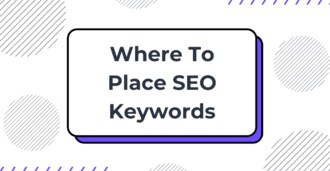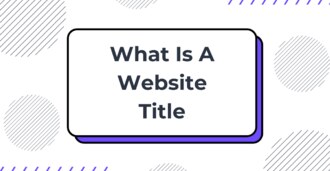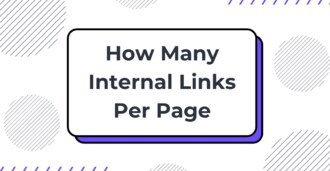What Are Headings And Subheadings? A Complete Guide

Do your articles feel chaotic or hard to follow?
Headings and subheadings are the main elements that organize your content, guide your readers, and help search engines understand your content.
But how do you use them effectively? It’s easy to either ignore their potential or go overboard, stuffing keywords or creating a chaotic hierarchy.
Let’s break down what headings and subheadings are, why they matter, and how to use them the right way. By the end, you’ll know exactly how to structure your content for maximum impact, readability, and SEO.
What Are Headings And Subheadings?
Headings and subheadings are the structural framework of your content.

Heading refers to the main title given to the post.

While subheadings are the different headings present inside the body of the content piece.
Inside a content editor, whenever you choose a particular heading level (let’s say H2 or H3), on the backend (at the code level) it gets its corresponding heading tag. And that’s how the visual appearance of the heading changes in the content.

Overall, a heading is just a short, descriptive line that introduces a section, while a subheading organizes information within that section.
For example:
Title/Heading H1: Why Running Is Important For Health And Fitness
Subheading H2: Benefits of Running
Subheading H3: 1. Physical Health Benefits
And so on…
Subheading H2: How to Start Running
Subheading H3: 1. Choosing The Right Gear
Subheading H3: 2. Easy Running Plans
And so on…
For SEO, as long as you have used headings and subheadings in their proper hierarchy, like above, it’s well-optimized. But what if you’re into academic research paper writing? You might also want to follow the APA writing style for headings and subheadings.
APA Style For Headings And Subheadings
APA (American Psychological Association) guidelines offer a structured system for headings, ensuring clarity and consistency. This approach, although designed for academic writing, is adaptable to blog content.
According to the APA Style Heading Guidelines, the headings are categorized into five levels based on their hierarchy and purpose.

This structured approach ensures that every section is distinct and logically connected.
Each level adds a layer of depth, helping both readers and search engines understand the relationships between ideas. Using these best practices makes even dense topics manageable.
Headings vs. Subheadings
Here’s a quick overview of the difference between headings and subheadings:
| Feature | Heading | Subheading |
|---|---|---|
| Purpose | Introduces main topics | Organizes subtopics within a heading |
| Hierarchy | Always higher (e.g., H1 or H2) | Lower-level (e.g., H3 to H6) |
| SEO Impact | Primary focus for keywords and search engines | Secondary, supports contextual relevance |
| Length | Short, impactful | Can be slightly longer, still concise |
| Frequency | 1-2 per post (e.g., 1 H1, 1-2 H2s per section) | As needed for clarity and depth |
Headings establish the structure of your content. They catch the reader’s attention and tell search engines what your page is about. Subheadings refine and detail that structure, ensuring readers stay engaged and information is easy to digest.
Related Read: Top Blog Post Formatting Tips
Why Headings and Subheadings Are Essential For SEO?
Search engines like Google rely on headings to understand your content. They scan headings to determine relevance, keywords, and structure. Here’s why they’re critical:
-
Improved Readability – Headings make it easier for readers to skim your content. Studies show most users spend just 15 seconds on a page before deciding to stay or leave.
-
Keyword Placement – Keywords in headings send strong signals to search engines. For example, if your post is about running then including the running keyword in a title like “Top 10 Benefits Of Running” helps users and search engines easily understand it’s the right post for that topic.
-
Better Accessibility – Proper heading structure improves screen reader navigation, making your content accessible to more users.
Pro Tip: Always keep headings descriptive and specific. Instead of "Tips for Landing Page," use "10 Best Tips For Writing High-Converting Landing Pages." This clarity benefits both readers and search engines.
How to Use Headings And Subheadings For Better Content Structure
Creating a solid content structure requires planning. Here’s a simple guide:
1. Start With A Clear H1:
Your H1 should describe your post’s main topic. For example, in this article, the H1 is "What Is Content Marketing?" Keep it under 60 characters for better visibility in search results.
2. Organize With H2s:
Use H2s to break down the main sections. For example, “Types Of Content Marketing” and “Benefits Of Content Marketing” could be the H2s in the post about content marketing.
3. Add Subheadings (H3-H4) as Needed:
Subheadings add depth. For example, under the H2 “Types Of Content Marketing,” you might add H3s like “Blog Posts” or “Video.”
4. Maintain Logical Hierarchy:
Each level of heading should naturally flow into the next. One of the most common mistakes is skipping levels (e.g., jumping from H2 to H4). It breaks the flow.
The proper way would be from H2, to H3, and then, finally, H4. This ensures both human readers and search engines can follow the structure.
5. Review For Clarity:
After drafting your content, review your headings. Ask yourself:
-
Do they clearly describe the content beneath?
-
Are they skimmable and engaging?
Read More: Top SEO Copywriting Tips For Beginners
Best Practices For Formatting Headings And Subheadings
Now, here are some of the best practices and tips to follow while writing headings and subheadings:
-
Keep Headings Concise – Aim for 6-10 words. Long headings confuse readers and decrease SEO impact.
-
Use Title Case or Sentence Case Consistently – Choose one style and stick to it. Title Case “What Is Content Marketing” is more common for blogs.
-
Avoid Keyword Stuffing – Use keywords naturally. For instance, instead of "Headings Subheadings SEO Tips," write "Tips for Using Headings and Subheadings for SEO."
-
Incorporate Numbers and Questions – Headings like “5 Best Ways To Write A Website Landing Page” are more engaging and will have higher chances of people actually reading the post.
-
Test Readability – Read your headings aloud. If they’re awkward or unclear, simplify them.
How SEOWriting Can Help You Create SEO-Optimized Headings
Crafting perfect headings—manually—can be time-consuming. SEOWriting simplifies the process by automating key aspects of heading creation and optimization.

With SEOWriting, you can generate SEO-Optimized Headings easily. The tool analyzes your topic and suggests headings with optimal keyword placement.

SEO Optimized Headings – SEOWriting ensures your headings are automatically aligned with your selected tone of voice and SEO keywords.

Maintain Perfect Structure – It organizes headings into a logical hierarchy (H1, H2, H3), saving you time.
Final Thoughts
Headings and subheadings are crucial elements of an effective content piece. They organize your ideas, improve readability, and enhance your SEO performance.
With the proper use of a clear hierarchy, placing keywords strategically, and following best practices, you can create high-quality content.
Ready to speed up your content creation workflow? Try SEOWriting for FREE now!



Write 10X Faster With AI-Powered Content
Create SEO-optimized articles in 15 minutes instead of 5 hours. Join 50,000+ content creators who generate content that ranks on top positions on Google. Save up to 80% of your time while getting 2X better results.
Try for Free →
